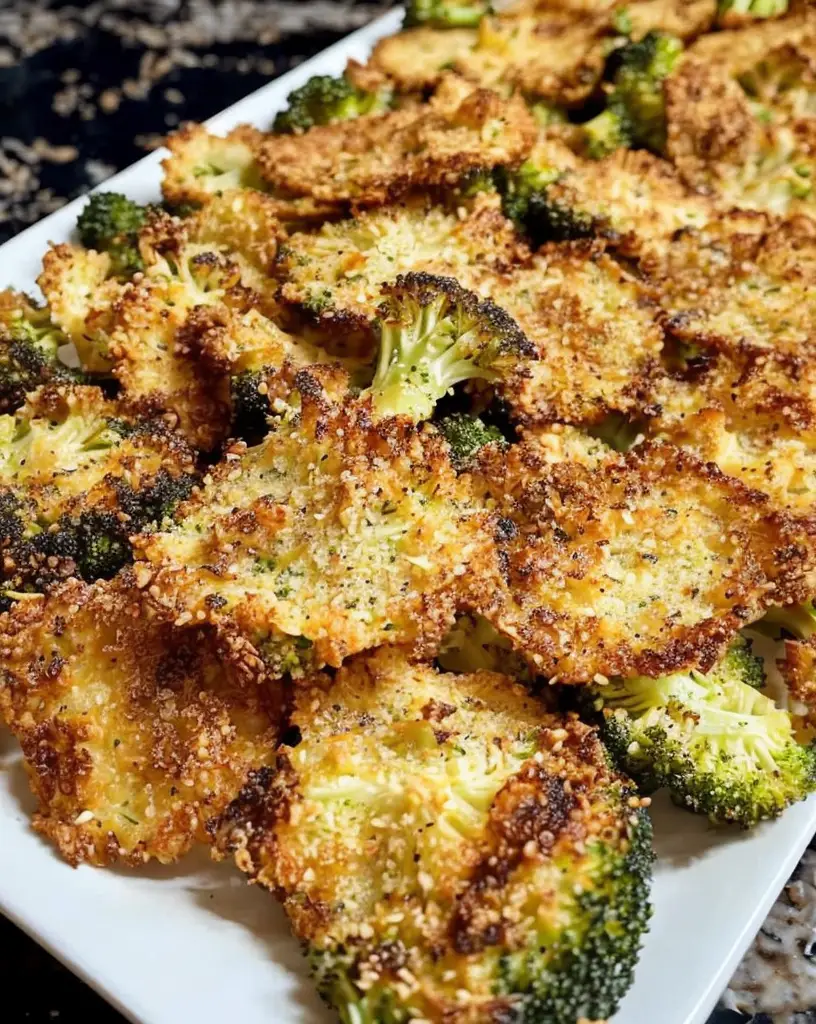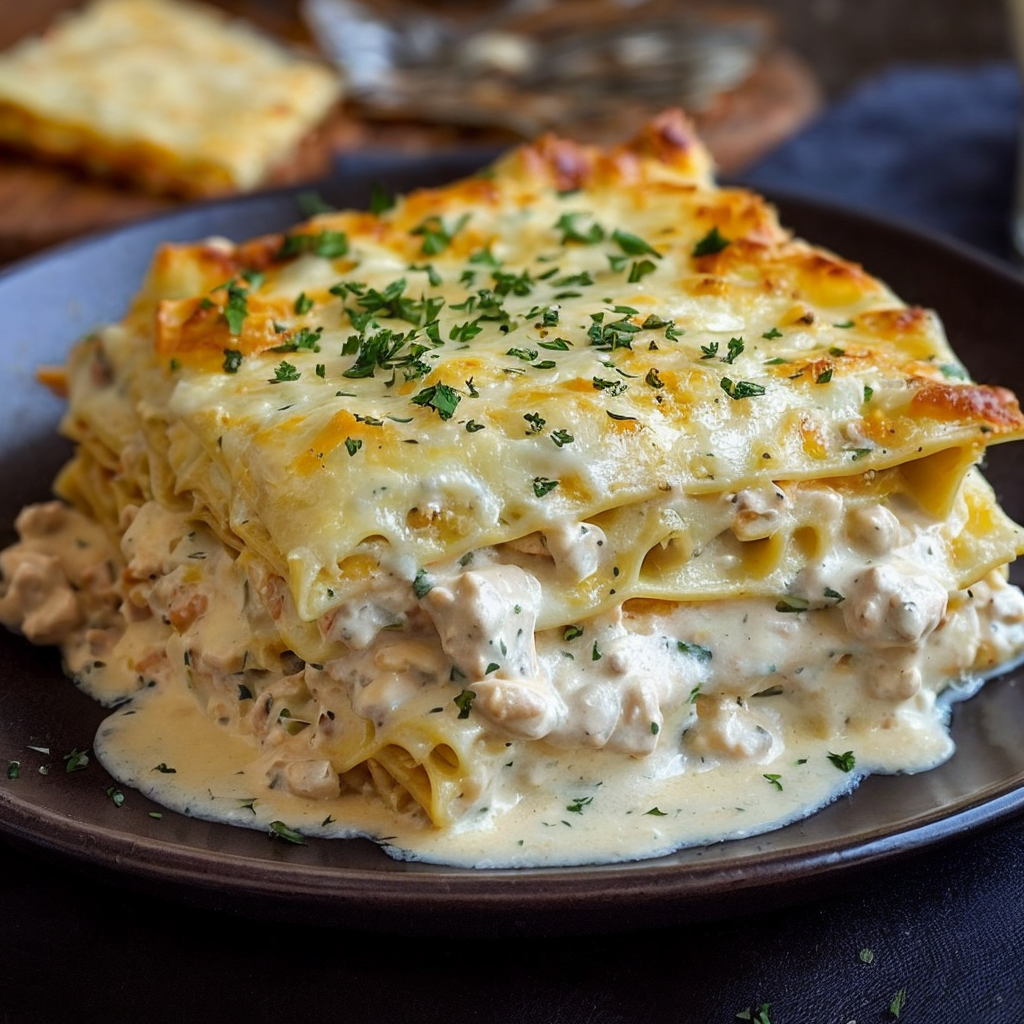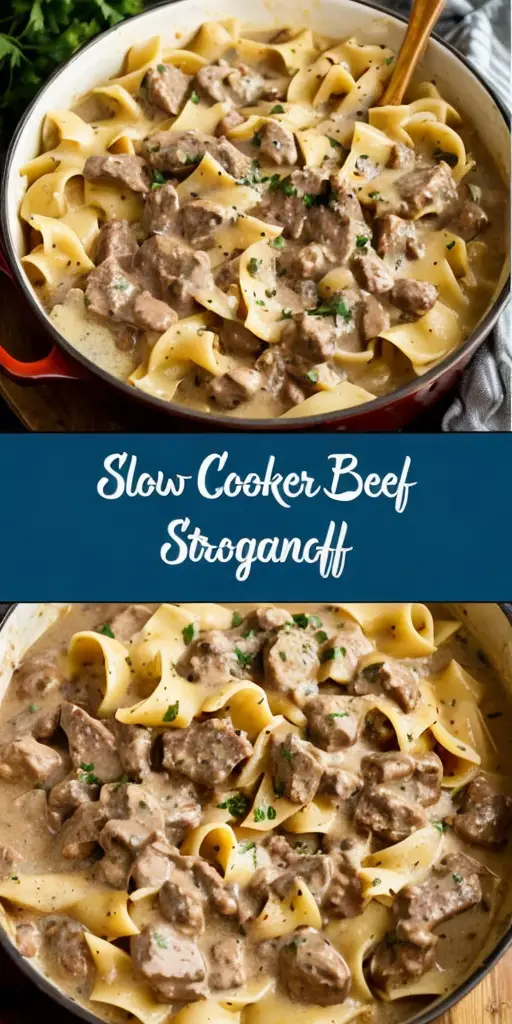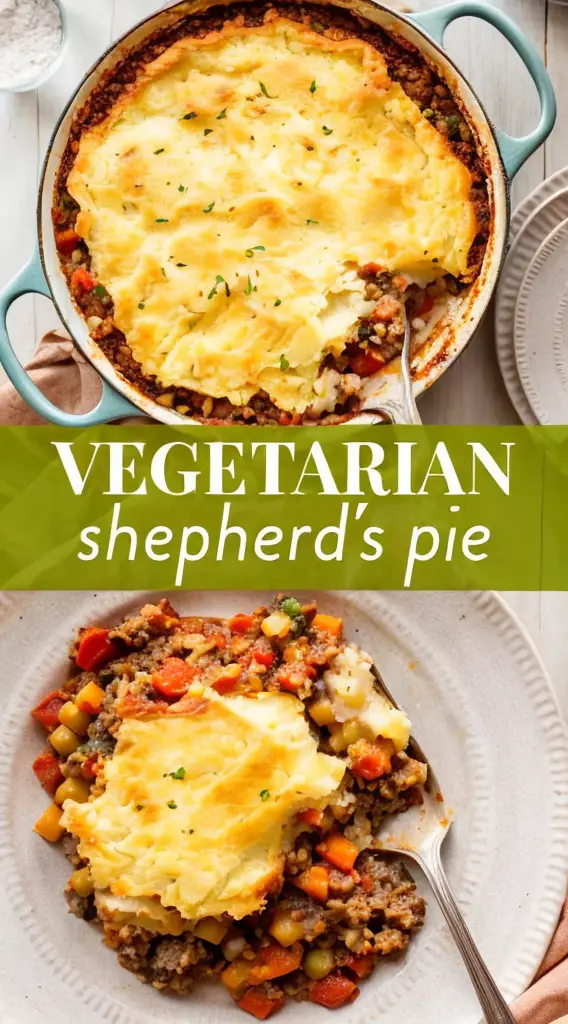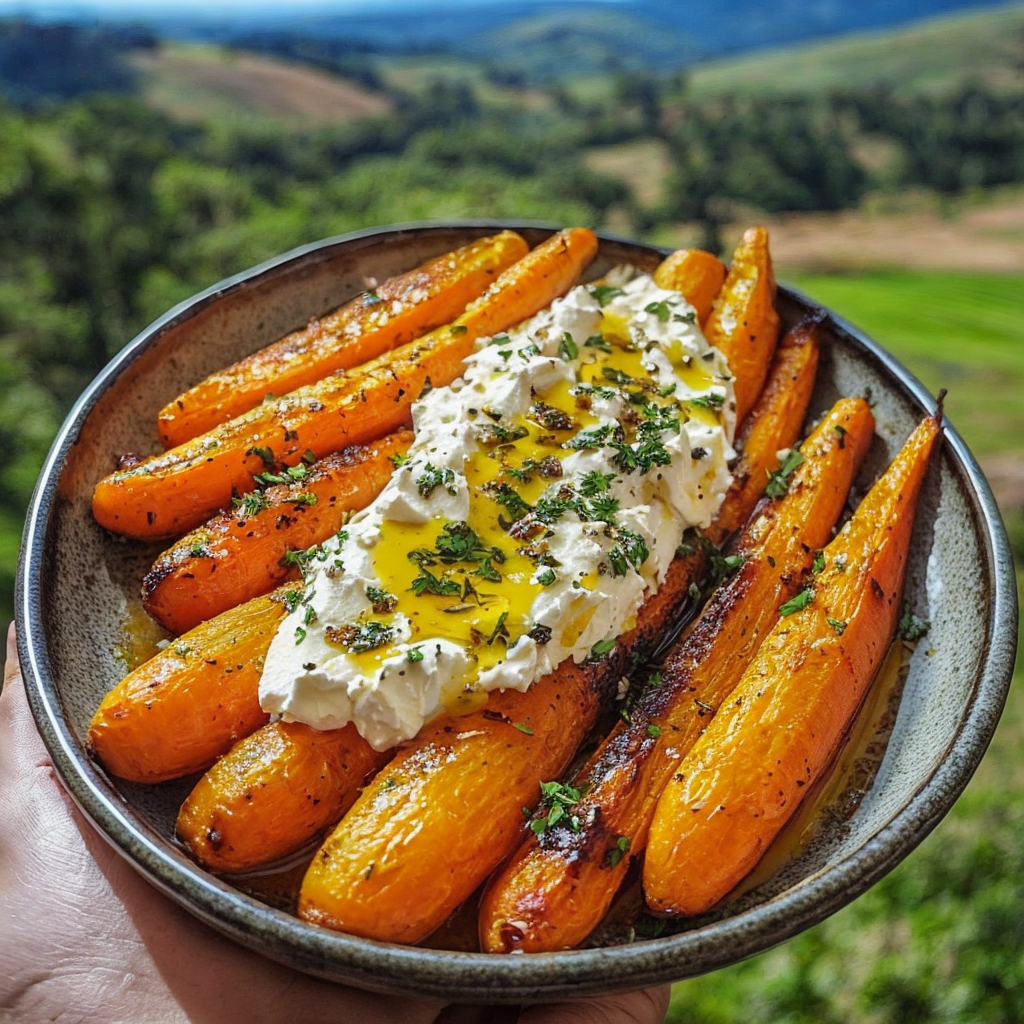Baked Ravioli Casserole: A Delightful Italian Comfort Dish
This Baked Ravioli Casserole is a super comforting dish that brings the rich flavors of Italy to your dining table. With layers of delicious ravioli, gooey cheese, and savory marinara sauce, this casserole is a surefire crowd-pleaser perfect for both weeknight dinners and casual gatherings. Its fragrant aroma promises satisfaction even before the first bite, making it a heartwarming choice any time you crave genuine comfort food.
Quick Recipe Highlights
- Flavor Profile: A delightful blend of rich tomato sauce with oregano-infused notes, combined with the creamy texture of melted cheese and the delicate taste of stuffed ravioli.
- Texture: Enjoy a satisfying mix of creamy and tender pasta layers, enriched by the molten gooeyness of melted cheese.
- Aroma: An enticing blend of baked Italian herbs and cheese that invites you to savor it even before it’s served.
- Visual Appeal: Golden-brown cheese topping with a hint of vibrant red tomato sauce peeking through, all layered over perfectly cooked ravioli.
- Skill Level Needed: Perfect for beginners, this is a straightforward, user-friendly dish that delivers impressive results with minimal culinary skills required.
- Special Equipment: A large casserole dish or baking tray.
Recipe Overview
- Difficulty Level: Chosen for its simplicity, this recipe requires little more than layering ingredients and letting the oven do its magic, making it accessible to cooks of all experience levels.
- Category: This dish falls under the main course category, offering a wholesome, satisfying option for family dinners.
- Cuisine: Rooted in Italian culinary tradition, it’s influenced by classic pasta bakes and Italian-American comfort food culture.
- Cost: Quite an affordable meal, the cost breakdown is roughly $10-15 depending on ingredient brands used.
- Season: The casserole shines year-round but is especially comforting during the cooler months when warm, hearty meals are welcomed.
- Occasion: Suitable for weeknight family dinners, potlucks, or casual gatherings.
Why You’ll Love This Recipe
The balanced taste and comforting texture make the Baked Ravioli Casserole an irresistible choice. As you delve into each mouthful, the creamy cheese layers complement the robust flavors of marinara sauce, while the soft ravioli offers a delightful texture contrast. This dish is all about indulgence without the fuss of complex preparation.
One of its biggest assets is its convenience. Ideal for preparing in advance, this casserole can be assembled the night before and simply baked when needed, freeing up time and stress. The straightforward layering technique makes it beginner-friendly, while the resulting flavors compete with those of more complex recipes.
Nutritionally, the casserole provides a fulfilling, well-rounded meal. Pair with a side salad for an added boost of vegetables, or experiment by incorporating spinach into the layers for more green goodness.
For social events, this casserole is a wonderful crowd-pleaser. Its rich flavors and appealing appearance make it suitable for potlucks and parties, where it shines as a comforting centerpiece that encourages guests to gather around the table.
Cost-effectiveness is another reason this dish stands out. With budget-friendly ingredients like frozen ravioli and marinara sauce, it delivers incredible flavors without breaking the bank. Plus, it makes for fantastic leftovers, stretching your culinary investment over multiple meals.
Historical Background and Cultural Significance
The origins of ravioli trace back to the Middle Ages in Italy, a time when stuffed pasta first emerged as a unique offering, filling the homes of the affluent with flavorful delights. Today, variations of ravioli appear in numerous regional Italian cuisines, each bringing a creative flair to the traditional dumpling dish.
Baked dishes, especially those like this casserole, hold a dear place in Italian culinary traditions, celebrated for their ability to bring families together over simple yet flavorful meals. They often highlight the rich taste of tomatoes and cheese, ingredients intrinsic to Italian artistry in cooking.
Over the years, ravioli’s evolution led to the development of numerous recipes, encompassing various fillings and methods of cooking, such as boiling, frying, and baking, each method creating a new dimension in flavor and texture.
Regions across Italy put their unique stamp on ravioli. In the south, you might find ravioli with a rich ricotta filling, while in the north, it’s common to have it filled with meat or vegetables, showcasing the adaptability and cultural richness of this beloved dish.
Ingredient Deep Dive
Ravioli is the star of this casserole, historically a symbol of abundance and creativity in Italian kitchens. These delicious pasta pockets originated in the heart of Italy and have since gained global adoration. Opt for ravioli stuffed with cheese or meat based on your flavor preference.
Marinara sauce is vital, providing the dish’s backbone with its zesty, tomato-rich flavor. The key is selecting a sauce with authentic Italian herbs like basil and oregano, creating a robust, fragrant base. Keep unused sauce refrigerated for later use, enhancing pizzas or pasta dishes.
Mozzarella cheese offers creaminess that marries the dish’s flavors. Its mild, stretchy consistency enhances each bite with luscious textures, an element synonymous with delightful Italian meals. For best results, select fresh mozzarella, storing it in the refrigerator submerged in water to maintain freshness until needed.
Common Mistakes to Avoid
- Overcooking the ravioli: Pre-cook ravioli just until al dente since they’ll continue cooking in the oven, preventing mushy texture.
- Not salting the water: Salt the pasta water generously to season ravioli as they cook.
- Using too much sauce: Over-saucing can lead to a soggy casserole, so stick to the recipe for best results.
- Under-seasoning: Taste your sauce and adjust seasoning before assembling the casserole.
- Baking uncovered initially: Cover initially to prevent cheese from burning, removing foil near the end to achieve a golden top.
- Skipping preheating: Ensure your oven is preheated for consistent cooking results.
- Neglecting cheese distribution: Evenly layer cheese for optimal flavor in each section of the casserole.
- Ignoring resting time: Allow the casserole to cool slightly for better slicing and serving.
Essential Techniques
Mastering the art of layering is crucial. It involves spreading ingredients evenly in each step. Start with the sauce to prevent sticking, followed by ravioli and cheese, ensuring consistent layers throughout. This technique guarantees a well-balanced, flavorful dish.
Baking is another key technique, requiring attention to temperature and timing for the perfect casserole texture. Follow the suggested baking time to ensure ravioli is tender yet firm, with cheese fully melted, harboring a golden top. Visual cues include bubbling edges and a golden-brown crust.
Pro Tips for Perfect Baked Ravioli Casserole
Add herbs like basil or parsley to enhance freshness and color. Fresh herbs should be incorporated sparingly, as their flavors are potent.
Opt for freshly grated cheese over pre-shredded bags, as the latter contains additives that may impact melting.
Experiment with layering order by alternating cheese or additional vegetables for varied texture.
If using meat-filled ravioli, consider pairing with a spicier sauce to complement the flavors.
Let the casserole rest before serving; this allows layers to set for cleaner cuts.
If you prefer a crunchy top, sprinkle breadcrumbs on the cheese before baking.
Swap marinara with a creamy alfredo sauce for a richer flavor variation.
Variations and Adaptations
Regional adaptations might include incorporating local cheeses or meats. In Southern Italy, add spicy sausage for a heartier twist, while the North favors a layer of besciamella for creaminess.
For seasonal adaptations, integrate summer vegetables like zucchini or winter squash into the layers, providing an extra burst of nutrition and color tailored to the time of year.
To suit dietary needs, consider using gluten-free ravioli. Vegan cheese and sauce alternatives are great swaps for plant-based eaters, maintaining the dish’s essence without compromising flavor.
Play with flavor variations by infusing garlic or red pepper flakes into the sauce. These additions can enhance heat and spice levels, adjusting the profile to suit personal preferences.
For texture modifications, adding crunchy elements such as chopped nuts or toasted seeds can surprise and delight diners with an unexpected layer of flavor and crunch.
Enhance presentation by serving in individual ramekins for portion control, offering an attractive, personal dining experience.
Serving and Presentation Guide
For plating, use wide, shallow bowls to showcase layers. Garnish with fresh basil for a vibrant touch, lending color contrast that appeals to the eye.
Traditional accompaniments include a side of garlic bread or a simple green salad, adding freshness and balance to the meal’s richness.
Modern serving suggestions embrace interactive dining, where diners can add personal touches to their plates, such as a drizzle of balsamic glaze or a pinch of cracked pepper.
Serve immediately from the oven, ensuring the cheese remains molten. However, avoid overheating, which could separate cheese oils, affecting texture.
Consider-size guest portions based on appetite to prevent overwhelming servings. Balanced restaurant-style plating involves offering a neatly cut wedge of casserole alongside accompanying side dishes.
Wine and Beverage Pairing
A medium-bodied red wine such as Chianti or a hearty Merlot pairs beautifully with the casserole’s rich flavors, complementing the tomato sauce’s acidity while enhancing the cheese’s creaminess.
Non-alcoholic alternatives include a sparkling grape juice or a well-flavored Italian soda for a festive touch, balancing tangy notes against the dish’s richness.
For coffee or tea pairings, opt for a smooth, unflavored coffee or a mild black tea, balancing intense flavors without clashing.
Keep beverages at room temperature for reds or chilled for fizzy options, maintaining optimal palate balance.
Serve wine in wide glasses to allow breathing, enhancing the aromas and flavors experienced with each sip.
Storage and Shelf Life
Store any leftovers in an airtight container, refrigerating promptly to maintain freshness. Consume within three days for best quality.
Ensure containers are shallow to promote even cooling and easy reheating when needed, using microwave-safe or oven-proof dishes for easy transfer.
Signs of spoilage include off-smells and changes in texture or liquid pooling. Discard any casserole that exhibits these traits to avoid potential food safety concerns.
Reheating should be gentle, either in an oven to restore crispy cheese or in a microwave, remembering to cover loosely to keep moisture in.
Freezing guidelines suggest not freezing cooked casserole, although individual components might freeze individually for assembly and cooking at a later date.
Make Ahead Strategies
Prepare the casserole the day before for stress-free cooking on serving day. Layer ingredients as instructed and cover tightly, reserving final cheese addition until baking.
Store assembled casserole in the fridge, maintaining consistent temperature for safety, ensuring leftovers are not kept unheated for more than two hours at any time.
Assess quality impact if stored too long, as noodles may absorb moisture and increase in sogginess. For assembly tips, create distinct layers for a structured outcome.
Reheat gently for optimal serving results. Add a small amount of fresh cheese to the top if needed, rejuvenating the dish’s appeal.
Introduce fresh elements post-reheating, such as herbs or cracked black pepper, to revive flavors and enhance appearance.
Scaling Instructions
Adjust ingredients proportionally if halving or doubling, ensuring to accommodate smaller or larger casserole dishes accordingly.
When scaling up, consider oven and equipment size to handle increased portions, preventing overcrowding and ensuring even cooking.
Timing may need modifications; larger casseroles require prolonged cooking for thorough heating, while smaller versions reduce baking time.
Storage considerations remain similar; divide larger casseroles into manageable sections for freezing if necessary, avoiding potential spoilage.
When preparing multiple casseroles, stagger baking times to ensure a fresh outcome, serving promptly post-baking for peak experience.
Nutritional Deep Dive
This casserole presents a balanced macro profile, featuring carbohydrates from pasta, proteins from cheese, and moderate fats, offering a rounded meal choice.
Micronutrient analysis highlights calcium from cheese and essential vitamins from tomato sauce, contributing to bone health and immunity.
Health benefits arise from using fresh ingredients, potentially reducing sodium and preservatives commonly found in premade options.
Consider portion sizes when serving, accommodating dietary needs by offering smaller servings for those monitoring macro intake.
Weight management tips include balancing casserole indulgence with lighter meals throughout the week, creating a holistic approach to healthy eating.
Dietary Adaptations
For gluten-free needs, swap traditional ravioli with certified gluten-free pasta alternatives.
Dairy-free options may include vegan cheese substitutions and almond or cashew-based sauces. Look for brands with clean, minimal ingredient lists.
Vegan adaptations involve selecting plant-based ravioli or a combination of vegetables and sauces designed to replicate traditional textures and tastes.
Low-carb and keto enthusiasts can replace ravioli with zucchini slices or other low-carb substitutes, crafting layers that support dietary goals.
Paleo options might involve swapping dairy elements with coconut cream and offering a meat-rich sauce, aligning dish components with dietary requirements.
Low-FODMAP adjustments focus on using lactose-free cheese and sensitivities-friendly marinara for reduced digestive impact, respecting dietary limitations.
Troubleshooting Guide
Ensure textures are optimal by sticking to recommended cooking times; overcooked pasta becomes mushy, while undercooked leads to tough bites.
Maintain flavor balance by tasting sauce before assembly, adjusting seasoning accordingly with more herbs or spices if desired.
Temperature issues commonly arise from improperly preheated ovens; follow guidelines strictly, ensuring even heating.
Equipment challenges can occur if using small baking dishes, resulting in overflow or uneven layers. Opt for appropriately sized bakeware for best results.
Ingredient substitutions might alter the dish’s profile; test small quantities first, gauging preferences and compatibility.
Timing concerns often arise when overbaking; stick to guidelines to prevent dried-out, overcooked layers that compromise taste.
Recipe Success Stories
Community feedback often highlights shared love for this simple, tasty dish, appreciated for its versatility and universal appeal among family and friends.
Variation successes abound, with readers incorporating seasonal vegetables or exotic cheeses, showcasing the casserole’s adaptable nature.
Adaptation stories often involve transforming the recipe for dietary needs, where creativity leads to delightful surprises and new favorites.
Reader suggestions frequently include tips for enhanced crust or unexpected layer additions, expanding the recipe’s possibilities while sharing culinary joy.
Photography tips inspire home cooks to harness natural light and capture stunning food shots, preserving moments shared around this inviting dish.
Frequently Asked Questions
Can I prepare the casserole in advance and bake later?
Absolutely! Assemble the casserole, cover, and refrigerate for up to 24 hours. Just add additional cheese before baking as it may absorb moisture.
What are good substitutes for cheese ravioli?
Meat or spinach-filled ravioli can be an excellent alternative, offering varied texture and flavor while maintaining the dish’s essence.
How do I prevent the casserole from becoming too watery?
Ensure pasta is drained well and limit sauce amount to recommendations, keeping consistency stable upon baking.
Is fresh or frozen ravioli better for this recipe?
Both work well; fresh ravioli tends to have a firmer texture, while frozen can be more convenient and longer-lasting.
Can I use homemade marinara sauce?
Homemade sauce often amplifies flavor and richness, providing control over seasoning and the opportunity for creative ingredient additions.
Should I cover the casserole with foil during baking?
Initial covering ensures even cooking and prevents cheese from over-browning. Remove foil partway through for a golden finish.
What side dishes complement this casserole?
Simple green salads, garlic bread, or roasted vegetables offer balanced nutritional contrast and enhance the meal’s overall flavors.
Can the casserole be frozen before baking?
It’s possible to freeze unbaked; however, be mindful that texture may vary. Ensure adequate thawing before baking for even results.
How long does the casserole need to rest before serving?
A rest of 10 minutes helps layers set, making serving sections easier and maintaining the desired presentation on plates.
What type of wine complements this meal?
A medium-bodied red pairs beautifully, enhancing the dish’s tomato and cheese elements while offering warming, comforting notes.
Is it possible to make this dish vegan?
Yes, by substituting ravioli and cheese with plant-based alternatives, ensuring the sauce is free from animal products as well.
Additional Resources
For further culinary exploration, consider related recipes like lasagna or stuffed pasta bakes, where staple techniques overlap and flavors expand.
Technique guides often provide depth in mastering pasta cooking or sauce preparation, enhancing broader culinary skills applicable beyond single recipes.
Ingredient information offers insight into quality selection, aiding in making informed choices that elevate meals.
Equipment recommendations focus on achieving the best results with modern, effective tools suited for both beginner and advanced cooking aspirations.
Seasonal variations introduce new elements, inspiring innovative attempts that bring fresh creativity and enjoyment to classic recipes.
Join the Conversation
Engage with fellow cooks by sharing your experiences and variations on social media platforms using #BakedRavioliCasserole, celebrating triumphs and discoveries.
Photography tips revel in capturing food beautifully, guiding you in lighting, angles, and showcasing admittedly mouthwatering compositions.
Recipe reviews encourage community contributions, supporting fellow cooks through ratings and suggestions, fostering a supportive, engaged culinary network.
Share unique variations that demonstrate your personal flair, contributing to a rich tapestry of global culinary creativity.
Inspire others by highlighting your casserole adventures through images, anecdotes, and advice, promoting unity through shared joy in food.
The Recipe
Baked Ravioli Casserole
Serves: 6
Prep Time: 15 mins
Cook Time: 30 mins
Total Time: 45 mins
Kitchen Equipment Needed
- Casserole dish
- Saucepan
- Mixing spoon
- Measuring cups and spoons
- Aluminum foil
Ingredients
- 1 lb cheese-filled ravioli
- 2 cups marinara sauce
- 2 cups shredded mozzarella cheese
- 1/2 cup Parmesan cheese, grated
- 1 tsp dried oregano
- Salt and pepper to taste
- Fresh basil for garnish (optional)
Directions
- Preheat oven to 375°F (190°C).
- Boil ravioli according to package instructions until al dente. Drain and set aside.
- Spread 1/2 cup of marinara sauce on the bottom of a casserole dish.
- Layer half of the cooked ravioli over the sauce.
- Spread 1 cup of marinara sauce over the ravioli, then sprinkle with 1 cup of mozzarella cheese.
- Repeat the layers with the remaining ravioli, marinara sauce, and 1 cup of mozzarella cheese.
- Top with Parmesan cheese and sprinkle oregano over the top.
- Cover with aluminum foil and bake for 15 minutes.
- Remove foil and bake another 15 minutes, until cheese is bubbly and lightly browned.
- Remove from oven and let cool for 10 minutes before serving.
- Garnish with fresh basil if desired.
Recipe Notes
- Opt for fresh or frozen ravioli based on availability.
- Vary cheese selections by adding a mix of Gruyere or fontina.
- Enhance the nutrition profile by layering in fresh spinach or arugula.

